Answered step by step
Verified Expert Solution
Question
1 Approved Answer
Please fill out table, answer questions according to the table and for the graph, please screenshot and colour in where the dots are supposed to
Please fill out table, answer questions according to the table and for the graph, please screenshot and colour in where the dots are supposed to be as it didnt allow me to input a file
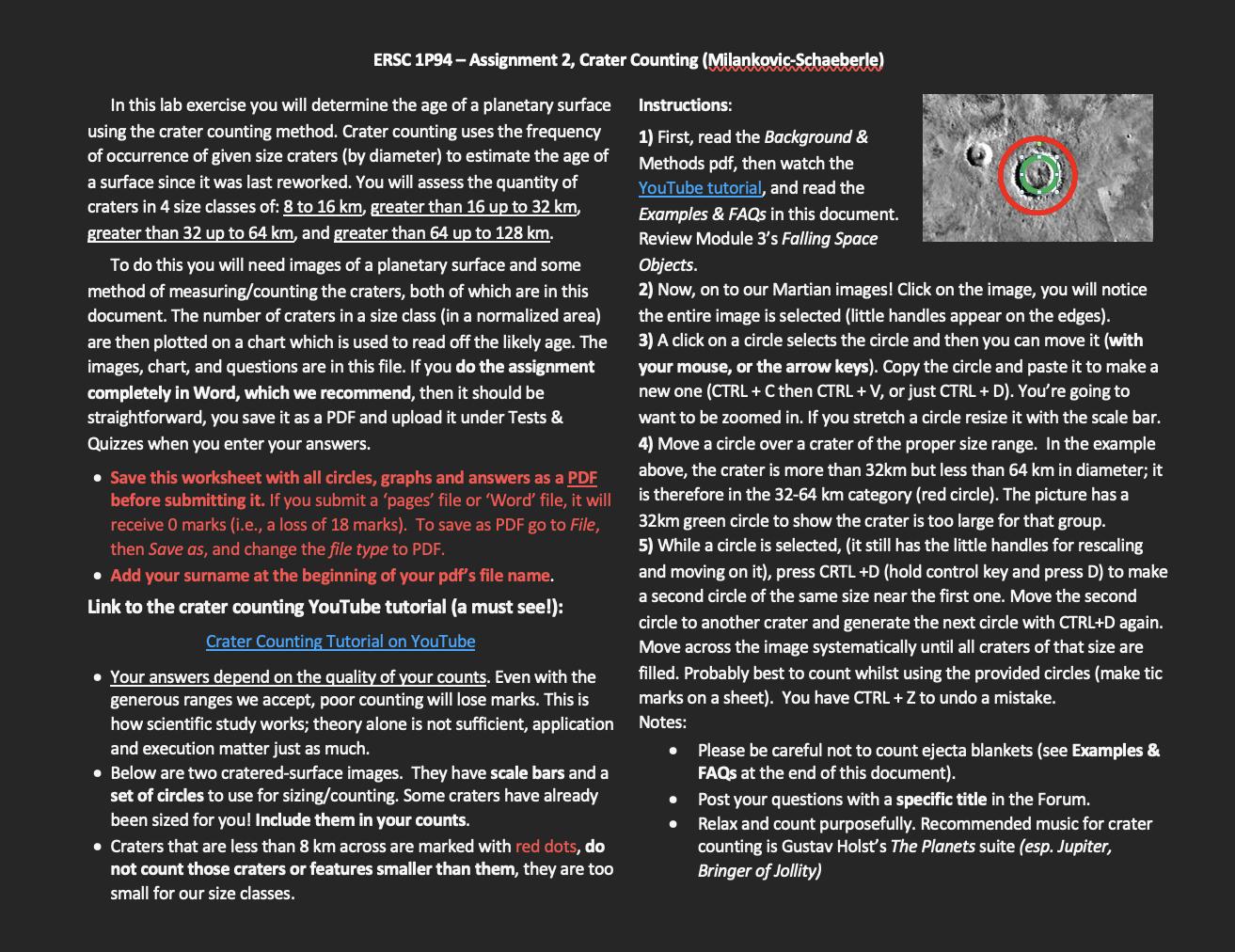

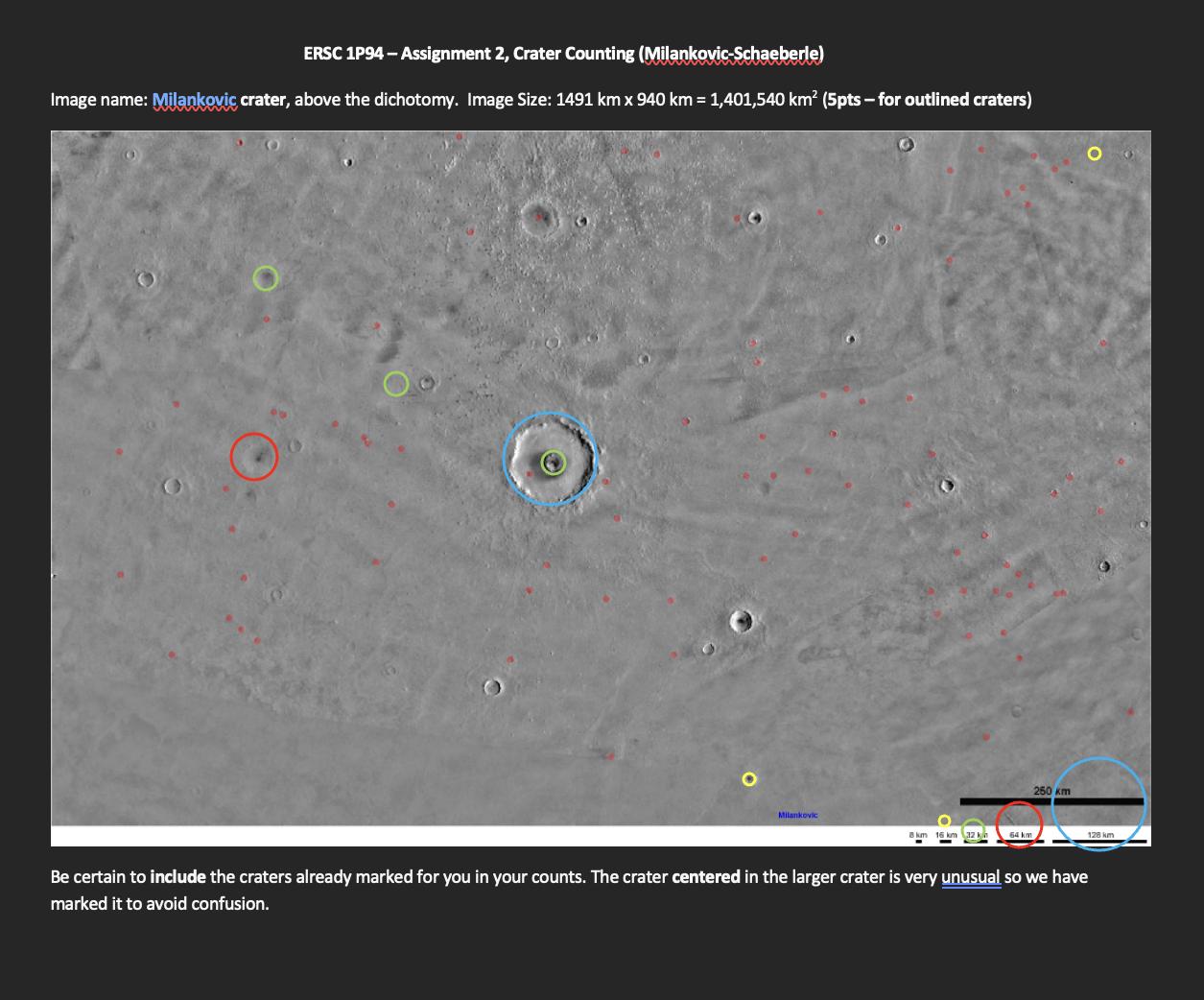
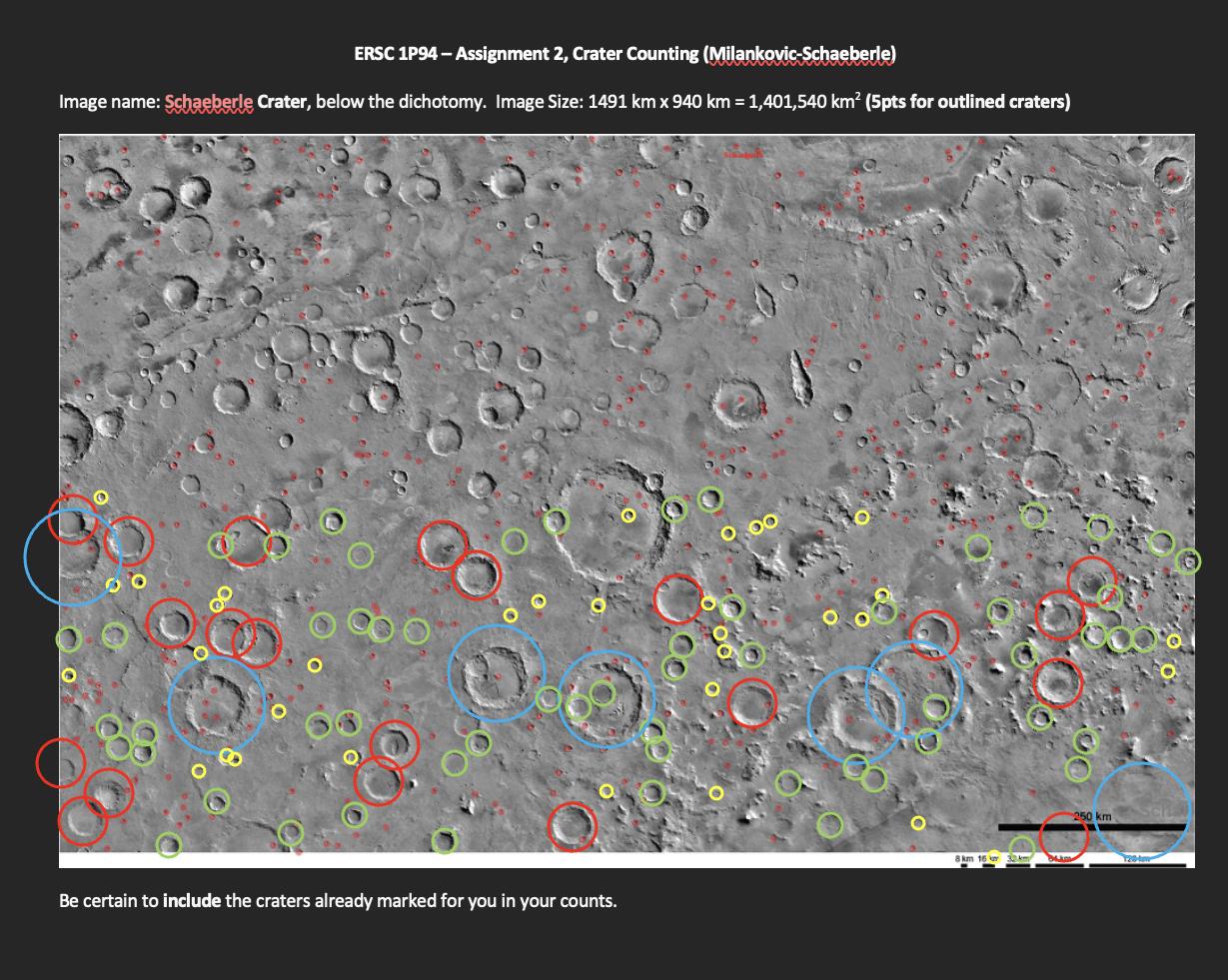
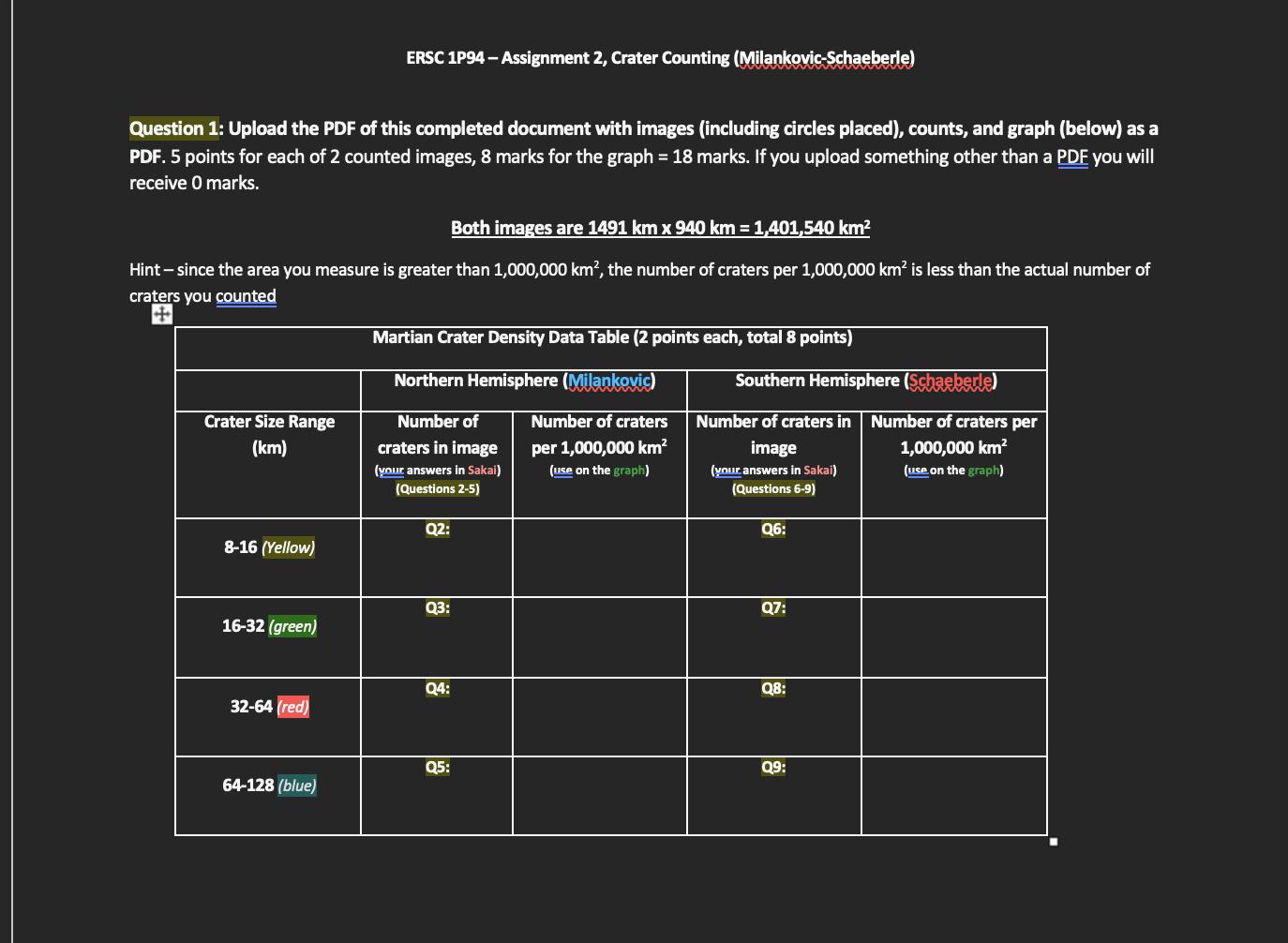

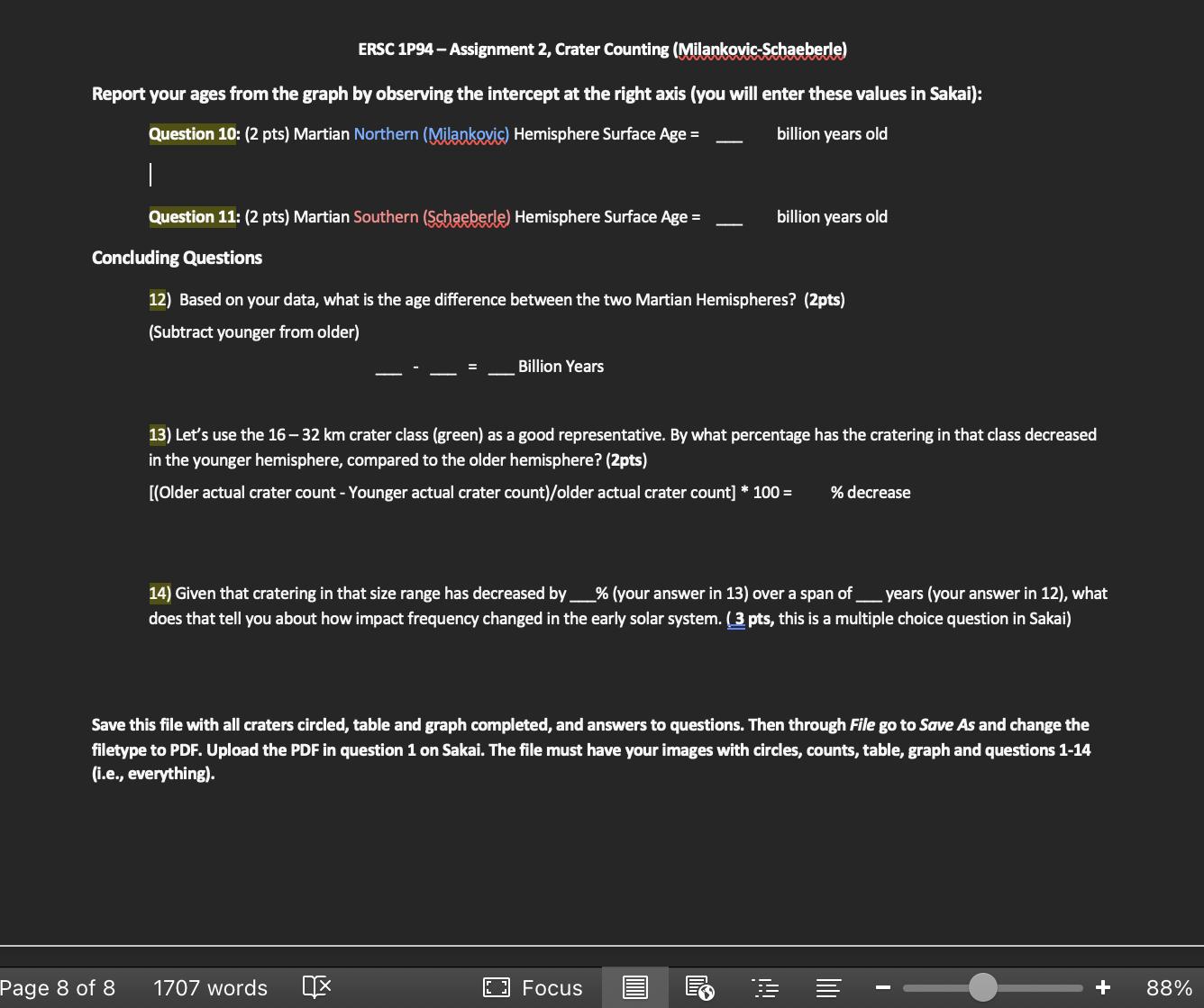
ERSC 1P94- Assignment 2, Crater Counting (Milankovic-Schaeberle) In this lab exercise you will determine the age of a planetary surface using the crater counting method. Crater counting uses the frequency of occurrence of given size craters (by diameter) to estimate the age of a surface since it was last reworked. You will assess the quantity of craters in 4 size classes of: 8 to 16 km, greater than 16 up to 32 km, greater than 32 up to 64 km, and greater than 64 up to 128 km. To do this you will need images of a planetary surface and some method of measuring/counting the craters, both of which are in this document. The number of craters in a size class (in a normalized area) are then plotted on a chart which is used to read off the likely age. The images, chart, and questions are in this file. If you do the assignment completely in Word, which we recommend, then it should be straightforward, you save it as a PDF and upload it under Tests & Quizzes when you enter your answers. Save this worksheet with all circles, graphs and answers as a PDF before submitting it. If you submit a 'pages' file or 'Word' file, it will receive 0 marks (i.e., a loss of 18 marks). To save as PDF go to File, then Save as, and change the file type to PDF. Add your surname at the beginning of your pdf's file name. Link to the crater counting YouTube tutorial (a must see!): Crater Counting Tutorial on YouTube Your answers depend on the quality of your counts. Even with the generous ranges we accept, poor counting will lose marks. This is how scientific study works; theory alone is not sufficient, application and execution matter just as much. Below are two cratered-surface images. They have scale bars and a set of circles to use for sizing/counting. Some craters have already been sized for you! Include them in your counts. Craters that are less than 8 km across are marked with red dots, do not count those craters or features smaller than them, they are too small for our size classes. Instructions: 20 1) First, read the Background & Methods pdf, then watch the YouTube tutorial, and read the Examples & FAQs in this document. Review Module 3's Falling Space Objects. 2) Now, on to our Martian images! Click on the image, you will notice the entire image is selected (little handles appear on the edges). 3) A click on a circle selects the circle and then you can move it (with your mouse, or the arrow keys). Copy the circle and paste it to make a new one (CTRL + C then CTRL + V, or just CTRL + D). You're going to want to be zoomed in. If you stretch a circle resize it with the scale bar. 4) Move a circle over a crater of the proper size range. In the example above, the crater is more than 32km but less than 64 km in diameter; it is therefore in the 32-64 km category (red circle). The picture has a 32km green circle to show the crater is too large for that group. 5) While a circle is selected, (it still has the little handles for rescaling and moving on it), press CRTL +D (hold control key and press D) to make a second circle of the same size near the first one. Move the second circle to another crater and generate the next circle with CTRL+D again. Move across the image systematically until all craters of that size are filled. Probably best to count whilst using the provided circles (make tic marks on a sheet). You have CTRL+ Z to undo a mistake. Notes: Please be careful not to count ejecta blankets (see Examples & FAQS at the end of this document). Post your questions with a specific title in the Forum. Relax and count purposefully. Recommended music for crater counting is Gustav Holst's The Planets suite (esp. Jupiter, Bringer of Jollity)
Step by Step Solution
There are 3 Steps involved in it
Step: 1

Get Instant Access to Expert-Tailored Solutions
See step-by-step solutions with expert insights and AI powered tools for academic success
Step: 2

Step: 3

Ace Your Homework with AI
Get the answers you need in no time with our AI-driven, step-by-step assistance
Get Started


